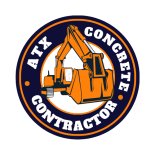Concrete surfaces endure the test of time, but regular wear and tear can take a toll. Knowing when to resurface these areas is crucial for maintaining their functionality, appearance, and structural integrity. Here’s an in-depth guide to understanding the right time for concrete resurfacing.
Visible Wear and Damage: Regular inspections should encompass a comprehensive examination of the concrete surface, going beyond superficial signs of wear. It’s crucial to evaluate the extent and depth of cracks, scaling, or spalling to determine potential structural implications. Thorough documentation of these issues is pivotal in guiding the resurfacing process, ensuring a holistic restoration approach. Engaging professional inspectors or contractors adept at identifying nuanced signs of deterioration can offer a deeper understanding of the surface condition.
Expanding on Inspection: Unveiling the root causes behind surface wear and damage enables more precise remediation strategies. For instance, discerning the underlying reasons for discoloration—whether it’s due to weathering, chemical exposure, or age—allows for tailored treatment during the resurfacing process. This proactive approach not only addresses visible damage but also fortifies the surface against future wear and tear. Moreover, conducting non-destructive testing methods like ground-penetrating radar or infrared thermography aids in a more comprehensive assessment of structural integrity.
Surface Irregularities: Resurfacing uneven areas necessitates meticulous attention to detail. Implementing advanced techniques like laser leveling or utilizing state-of-the-art grinding tools ensures a perfectly smooth and level surface. The expertise required to handle settling or heaving issues ensures not only visual appeal but also safety and functionality. Collaborating with contractors proficient in precision leveling and surface correction methodologies ensures a seamless and hazard-free environment.
Fading and Discoloration: Delving deeper into the causes of discoloration—be it prolonged UV exposure, environmental pollutants, or chemical reactions—leads to more precise solutions during resurfacing. Optimal material selection and application methods help restore the concrete’s original color and vibrancy. Advanced surface treatments, such as chemical staining or surface etching, effectively combat discoloration while enhancing the surface’s aesthetic appeal and durability.
Functional Concerns: Prioritizing functional repairs involves a holistic approach. Addressing structural issues alongside aesthetic enhancements ensures not just a visually appealing surface but also a structurally sound one. This approach minimizes hazards, promoting safer and more durable concrete surfaces. Collaboration with structural engineers or specialists in materials science helps in a comprehensive analysis of structural weaknesses, allowing for effective remediation strategies during resurfacing.
Preventive Maintenance: A proactive stance toward preventive maintenance involves a regular schedule for inspections and planned resurfacing. Implementing preventive measures in areas prone to damage due to heavy usage or specific environmental exposure mitigates the risk of escalating repairs and saves on overall maintenance costs. Additionally, adopting proactive measures such as surface sealants or protective coatings guards the surface against future wear, extending its longevity.
Age of the Concrete: Comprehending the aging process of concrete surfaces is key to effective management. Thorough assessments help predict potential wear patterns, allowing for strategic planning of resurfacing efforts. Tailored solutions for aging concrete—such as advanced repair techniques or specialized overlay materials—maximize the surface’s longevity and durability. Engaging material scientists or experts in concrete aging dynamics provides deeper insights into surface behavior and optimal preservation strategies.
Planning for Renovation or Sale: Integrating resurfacing into renovation plans or before property sales involves careful consideration of timelines and desired outcomes. Strategic resurfacing efforts can significantly boost property value and positively influence a potential buyer’s perception. Engaging real estate professionals or staging experts can offer valuable insights into which surfaces to prioritize for resurfacing, ensuring maximum impact on property aesthetics and value.
Professional Assessment: Seeking expertise from seasoned contractors ensures a comprehensive understanding of concrete surface conditions. Their insights provide tailored solutions that not only address visible damage but also prevent future issues, optimizing the surface’s performance and appearance. Partnering with contractors who specialize in specific surface conditions or environmental exposures ensures nuanced and effective resurfacing solutions. Collaborating with professionals adept at predictive maintenance can forecast future wear patterns, facilitating proactive resurfacing efforts.
Advantages of Timely Resurfacing for Concrete Surfaces
Resurfacing concrete surfaces at the right time offers several compelling advantages, enhancing both aesthetics and functionality while ensuring prolonged durability and structural integrity.
Timely resurfacing addresses minor issues before they escalate into significant problems. Repairing small cracks, spalling, or discoloration early prevents these issues from worsening and requiring more extensive repairs later on.
Resurfacing addresses uneven surfaces, cracks, or damaged areas that pose safety hazards. Smoothing out concrete resurfaces and repairing damage ensures a safer environment, reducing the risk of trips, falls, or other accidents.
Resurfacing rejuvenates the appearance of concrete surfaces. It restores color, texture, and uniformity, breathing new life into dull or worn-out areas, significantly enhancing the overall aesthetics.
Regular maintenance and timely resurfacing significantly extend the lifespan of concrete surfaces. Preventing further deterioration ensures that the surface remains functional and visually appealing for an extended period.
Addressing minor issues promptly maintains the structural integrity of concrete surfaces. Resurfacing reinforces the surface, preventing deeper damage and preserving the structural strength of the underlying concrete.
Conclusion
In the intricate dance between time and concrete surfaces, the decision of when to concrete resurfacing. becomes paramount. This comprehensive guide has illuminated the key considerations, from visible wear and aging concrete to functional concerns and planning for property transformations. Understanding the nuances of timely resurfacing empowers property owners to make informed choices, preserving both the aesthetics and structural integrity of concrete surfaces.
